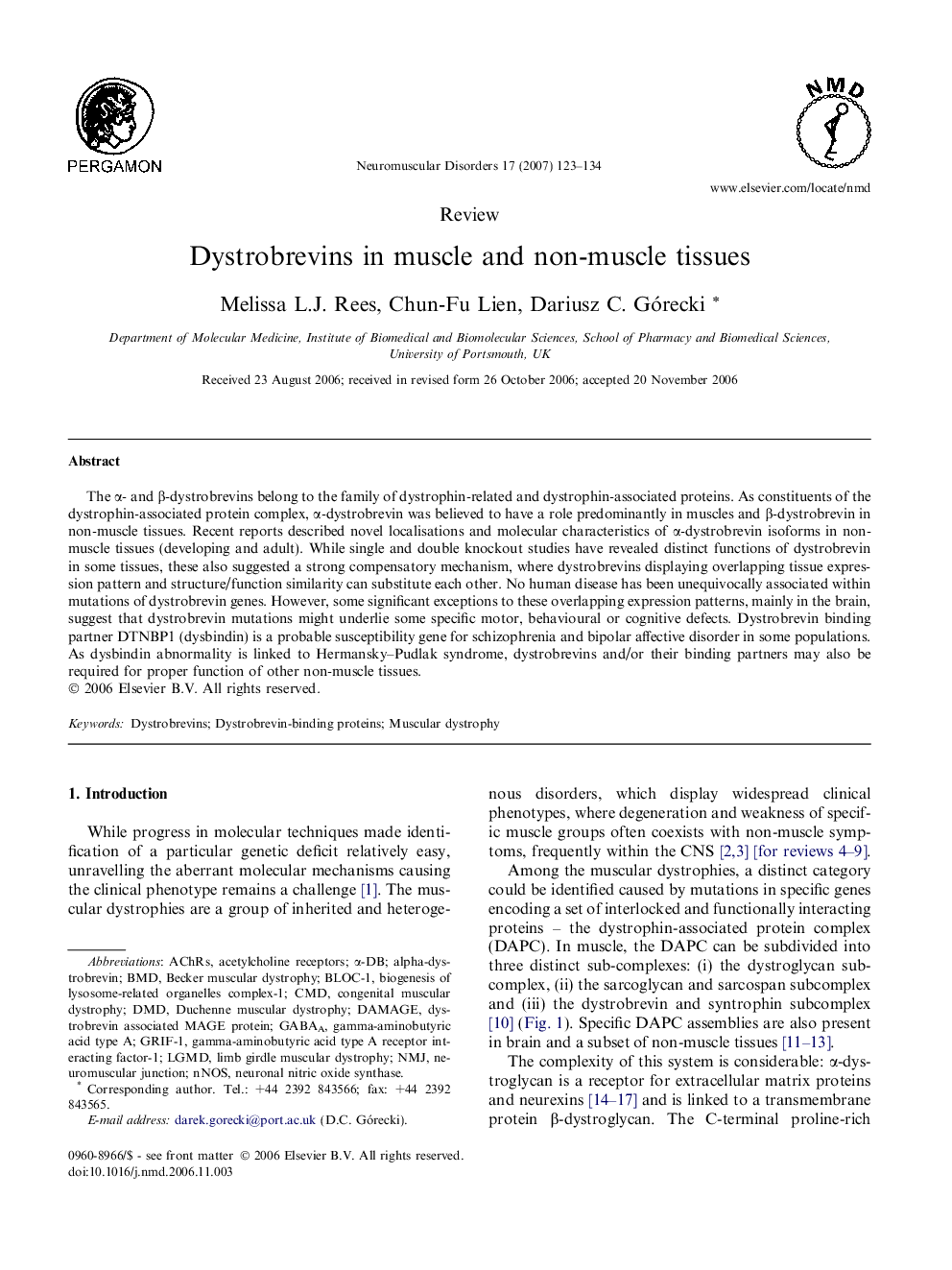| Article ID | Journal | Published Year | Pages | File Type |
|---|---|---|---|---|
| 3081787 | Neuromuscular Disorders | 2007 | 12 Pages |
Abstract
The α- and β-dystrobrevins belong to the family of dystrophin-related and dystrophin-associated proteins. As constituents of the dystrophin-associated protein complex, α-dystrobrevin was believed to have a role predominantly in muscles and β-dystrobrevin in non-muscle tissues. Recent reports described novel localisations and molecular characteristics of α-dystrobrevin isoforms in non-muscle tissues (developing and adult). While single and double knockout studies have revealed distinct functions of dystrobrevin in some tissues, these also suggested a strong compensatory mechanism, where dystrobrevins displaying overlapping tissue expression pattern and structure/function similarity can substitute each other. No human disease has been unequivocally associated within mutations of dystrobrevin genes. However, some significant exceptions to these overlapping expression patterns, mainly in the brain, suggest that dystrobrevin mutations might underlie some specific motor, behavioural or cognitive defects. Dystrobrevin binding partner DTNBP1 (dysbindin) is a probable susceptibility gene for schizophrenia and bipolar affective disorder in some populations. As dysbindin abnormality is linked to Hermansky-Pudlak syndrome, dystrobrevins and/or their binding partners may also be required for proper function of other non-muscle tissues.
Keywords
Related Topics
Life Sciences
Neuroscience
Developmental Neuroscience
Authors
Melissa L.J. Rees, Chun-Fu Lien, Dariusz C. Górecki,
